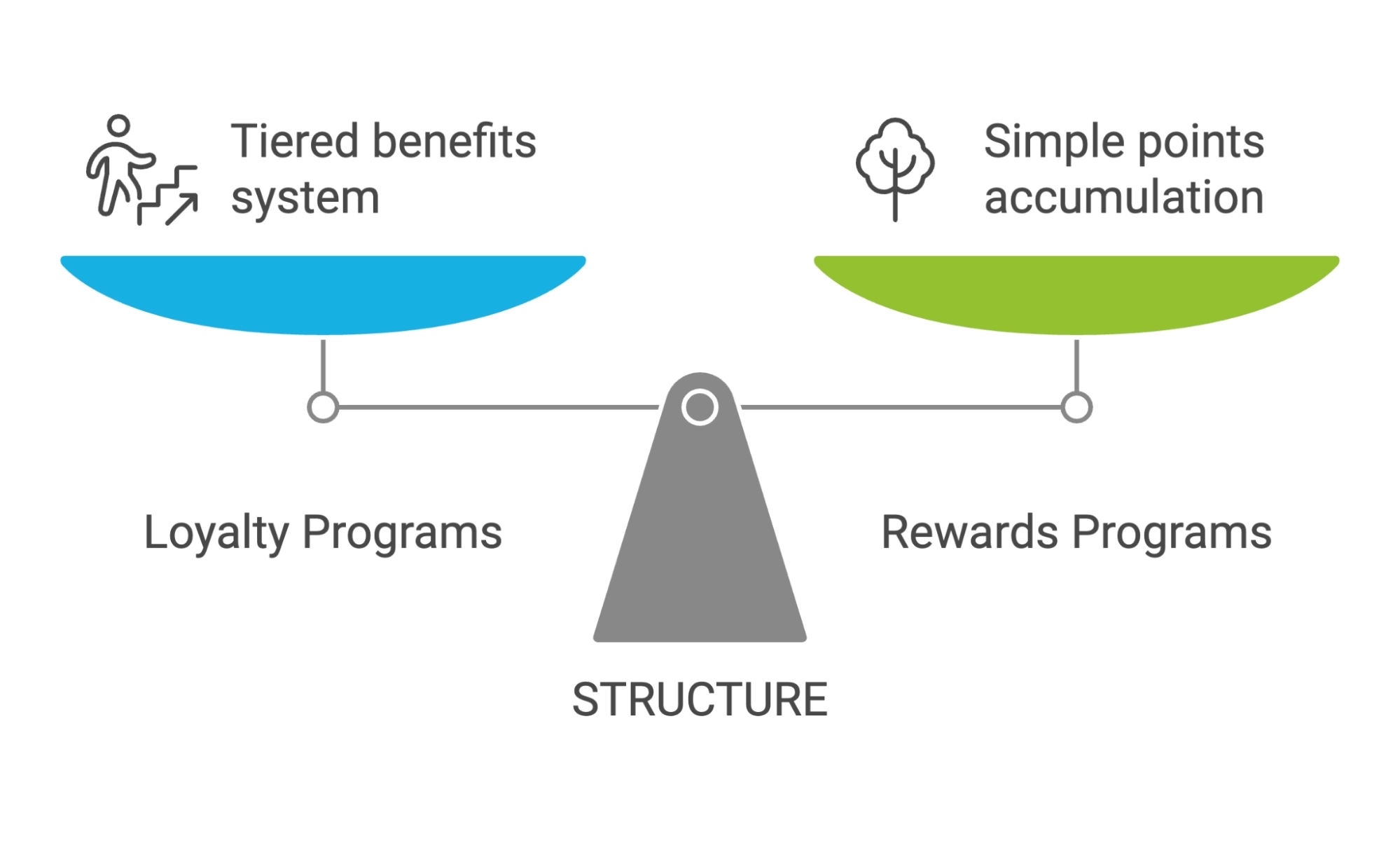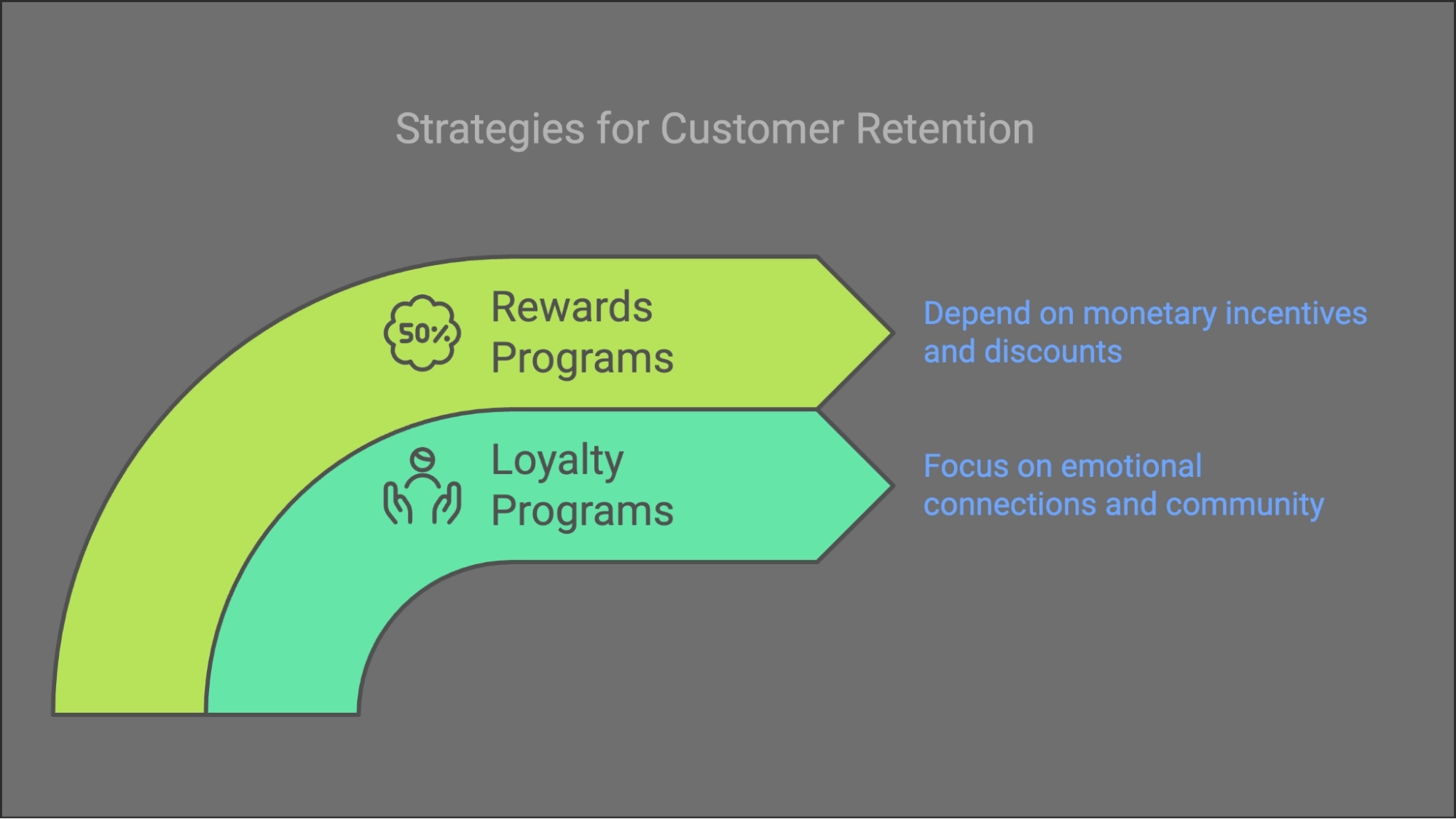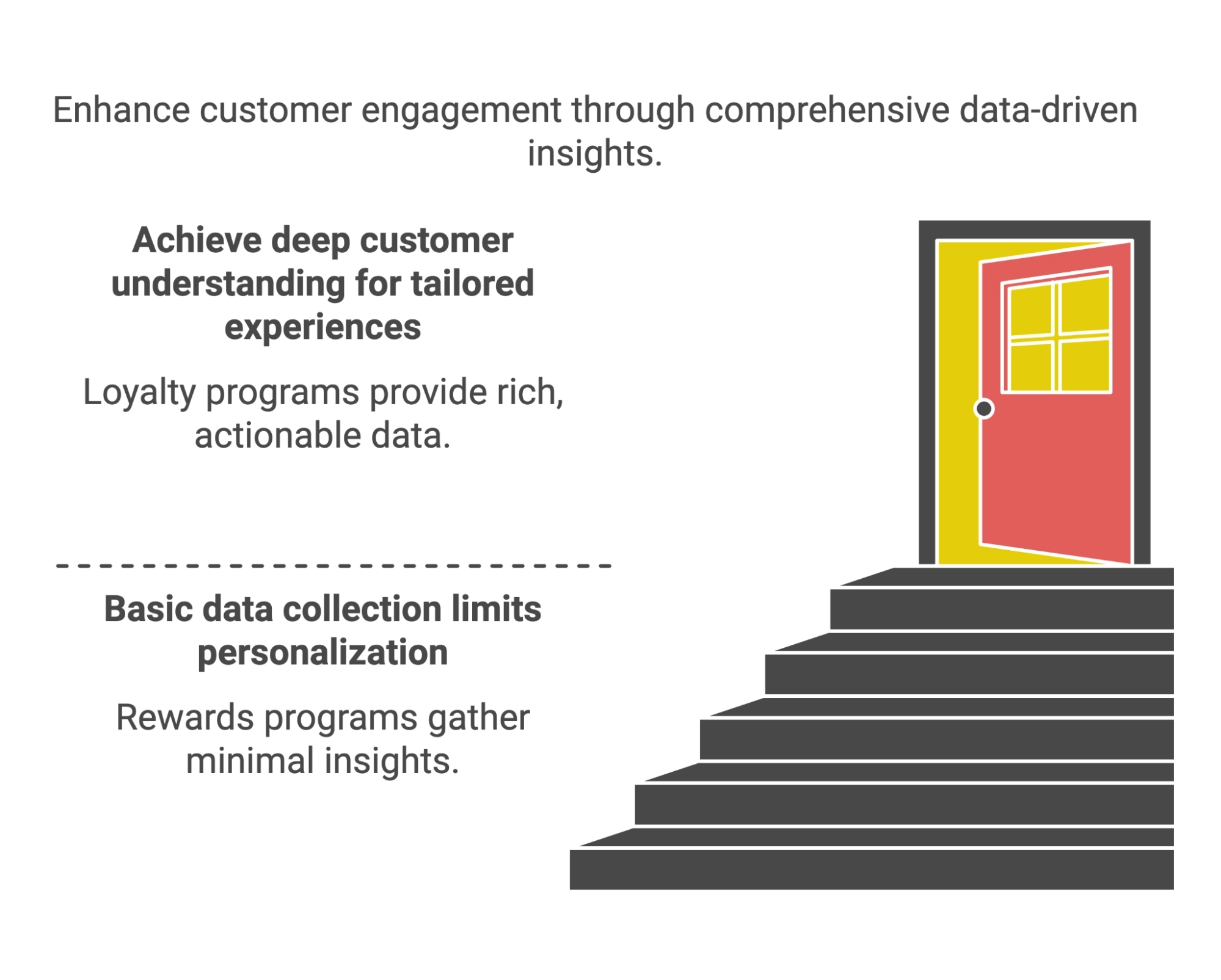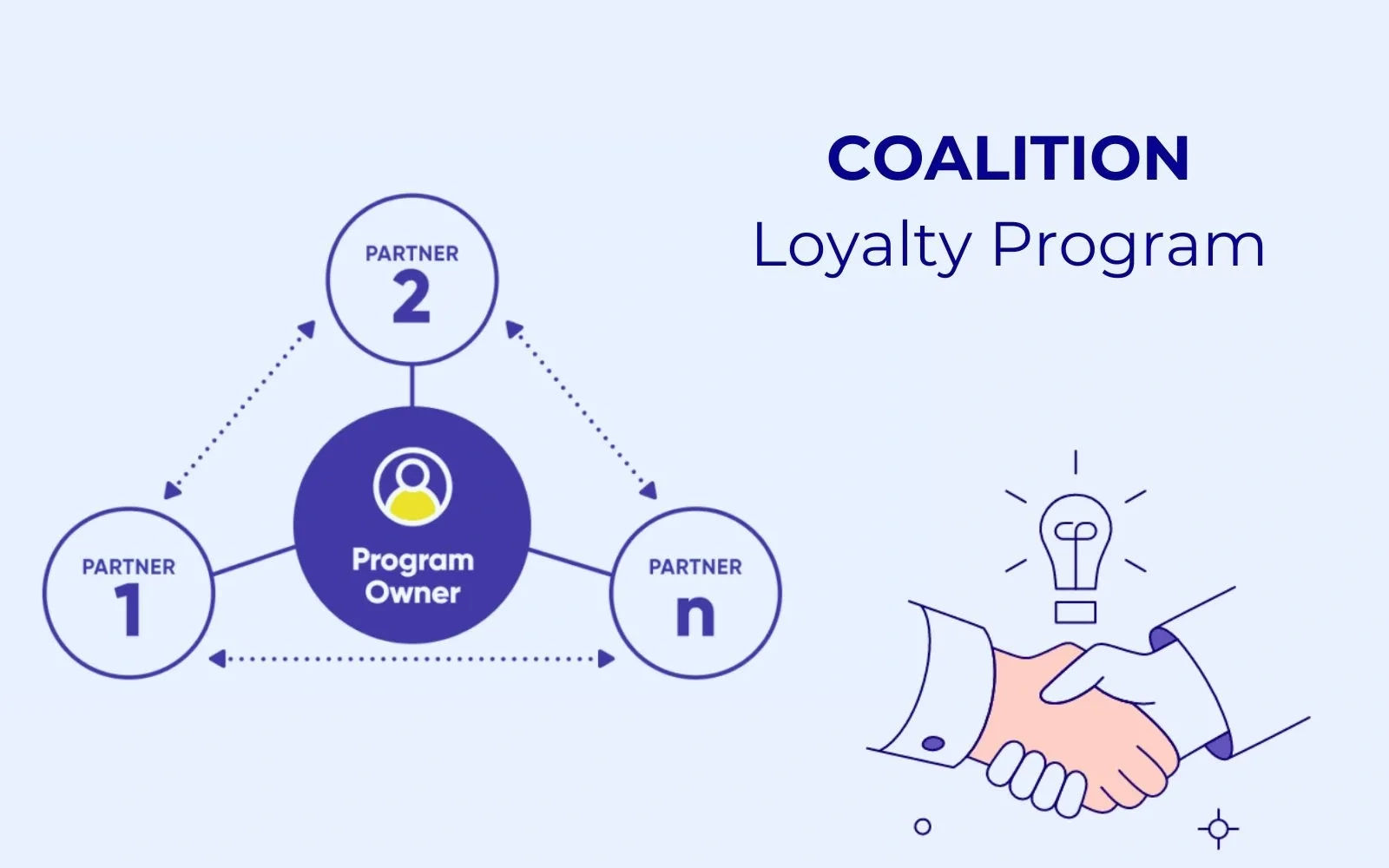Loyalty vs Rewards Programs: Choosing the Right Strategy for Your Business
Discover key differences between loyalty vs rewards programs: build lasting bonds or offer quick perks, and find the best fit for your goals

In today’s competitive market, businesses are always seeking ways to keep customers coming back and boost repeat purchases. Loyalty and rewards programs are two popular methods often mentioned together but have different goals.
This article explains the differences between the two, highlights their unique advantages, and explores how they can improve customer retention and satisfaction.
Loyalty vs Rewards Programs: A Quick Overview
Loyalty programs and rewards programs are two effective ways businesses can engage customers. However, they serve different purposes.
Loyalty programs focus on building long-term relationships and emotional connections with customers by creating emotional connections and encouraging repeat engagement. They often include tier-based benefits, personalized experiences, and exclusive offers to keep customers coming back.
In contrast, rewards programs are transaction-focused, offering points, discounts, or cash back for purchases or referrals.
While rewards programs provide quick incentives, loyalty programs focus on creating lasting customer commitment. Together, they create a balanced strategy for retaining and satisfying customers.
Here’s a clear table summarizing the key differences:
| Aspect | Loyalty Programs | Rewards Programs | Who Wins |
|---|---|---|---|
| Focus | Long-term relationships | Short-term incentives | Loyalty Programs (Long-term goal) |
| Engagement | Emotional and interactive | Transactional | Loyalty Programs (More engagement) |
| Goal | Foster repeat business and customer retention | Quick boost in sales | Loyalty Programs (deeper bond) |
| Pricing | Higher cost (complex tools, personalization) | Lower cost (simple points system) | Rewards Programs (cheaper) |
| Structure | Multi-tier, status levels | Simple points-for-discounts | Loyalty Programs (more engaging) |
| Rewards | Exclusive events, points, tiers, experiential rewards | Basic discounts, coupons, cash back, freebies | Loyalty Programs (unique perks) |
| Timeframe | Long-term growth, slow to show results | Quick results, short-term gains | Depends on need (Loyalty for long-term, Rewards for short-term) |
| Customer Retention | Strong emotional loyalty, less price-sensitive | Price-based loyalty, easily swayed | Loyalty (better retention) |
| Data Collection | Rich data, supports personalization | Basic data, limited insights | Loyalty (better insights) |
My Early Verdict: In general, loyalty programs are the clear winner if you aim for long-term customer relationships and sustainable growth. While rewards programs are useful for quick wins, loyalty programs create lasting value for your business.
Loyalty and Rewards Programs: Pros & Cons
Both loyalty and rewards programs have their benefits and challenges. Below is a detailed look at the pros and cons of each to guide your decision-making.
Loyalty Programs
Pros
- Builds long-term relationships and brand loyalty.
- Customizable with tiers, personalized rewards, and exclusive benefits.
- Enhance brand identity to reinforce brand loyalty.
- Keep customers engaged over time through consistent rewards.
- Drive repeat businesses by rewarding loyalty.
Cons
- Takes longer to show results as it focuses on long-term relationships.
- Complex to manage for implementation.
- High initial costs for personalization and exclusive rewards.
- Need regular updates to stay relevant.
Rewards Programs
Pros
- Easy to set up, such as points-per-purchase systems.
- Deliver immediate impact through fast incentives.
- Attract new customers, idea for enticing first-time buyers with instant rewards.
- Flexible rewards – Easily adaptable to seasonal campaigns or specific goals.
Cons
- Short-term focus
- Risk of over-discounting
- Customers may engage only for rewards without deeper brand attachment.
Loyalty vs Rewards Programs: A Detailed Comparison
After diving into the basic advantages and drawbacks, let’s get into the nitty-gritty of how these programs differ.
Goal

Loyalty Programs
Loyalty programs are designed to build long-term relationships by fostering trust and emotional connections with customers – think of it as building a friendship. Their primary aim is to retain customers and encourage ongoing engagement over time. These programs often include personalized rewards, tiered memberships, and exclusive benefits like VIP access or tailored offers, making customers feel valued and connected to the brand.
According to recent market research, 93% of consumers are more likely to make repeat purchases from brands that recognize and reward them personally.
For example, the Starbucks app remembers your favorite drinks and lets you skip the line. At the same time, Sephora’s Beauty Insider program offers exclusive masterclasses and early access to products – small touches that make you feel known and valued.
Rewards Programs
In contrast, rewards programs are more like a simple “thank you” for shopping. Their main goal is to drive immediate sales by offering instant benefits. It’s straightforward: spend money, get something back.
Rewards programs are transactional and focus on driving immediate actions, such as purchases or referrals. They provide tangible benefits like points, discounts, or cashback that customers can quickly redeem for rewards, motivating short-term engagement and boosting sales.
For example, when you use a basic store credit card, you spend $100 and get $5 back. You can also think of Amazon Prime’s straightforward 5% cashback on purchases or Target’s Circle rewards—no fancy relationship-building, just pure transaction rewards.
My Verdict
Loyalty programs create stronger business foundations because emotional connections last longer than discount hunting. Research indicates that emotionally connected customers have a 306% higher lifetime value.
Pricing
Loyalty Programs
Having managed both programs for various businesses, I can tell you that loyalty programs are heavier on the wallet. You’re investing in relationship-building tools, not just reward-tracking systems.
The cost difference is substantial, with loyalty programs often costing 3-4 times more. Annual costs can range from $5 to $10 per active member.
These programs involve complex software systems, staff training, ongoing management, and customer data analysis to enable personalized experiences. The expenses add up quickly because you’re building a comprehensive ecosystem, not just a basic rewards platform.
Recent studies have shown that implementation costs for enterprise-level loyalty programs often range from $50,000 to several million dollars.
💡 For more information, see our detailed breakdown of Loyalty Program Costs
Rewards Programs
Rewards programs, however, are much more budget-friendly. They typically need only a basic point-tracking system, simple redemption mechanisms, and minimal staff training.
These are perfect for smaller businesses or those testing the waters with customer programs. Implementation costs usually start around $5,000-$15,000.
My Verdict
If your budget is tight, start with a rewards program and upgrade later when you have more resources. Rewards programs are generally simpler and less expensive to implement than full-fledged loyalty programs.
Structure

Loyalty Programs
Loyalty programs and rewards programs differ significantly in structure. Loyalty programs often feature tiered levels, personalized rewards, and exclusive perks, such as VIP access or members-only experiences, to foster long-term engagement and customer retention. These programs may also include non-transactional rewards, like recognizing milestones, and rely on data analysis to tailor offerings to customer preferences.
For instance, American Airlines’ AAdvantage program has four tiers, each with increasingly valuable perks. The structure is more complex but more engaging, with various ways to earn and enjoy benefits.
Rewards Programs
In contrast, rewards programs have a straightforward, transactional structure aimed at driving immediate actions. Unlike loyalty programs, they don’t include multiple tiers or special status levels. Instead, they use simple point-based systems where customers earn points, such as “spend X, get Y points,” through purchases or referrals. These points can then be redeemed for discounts, cashback, or free products, making the process easy and quick for customers.
My Verdict
Loyalty programs are the winner in terms of structure. This tiered structure encourages customers to strive for higher and also fosters a deeper connection with the brand through exclusive rewards and personalized experiences.
Rewards

Loyalty Programs
Rewards in loyalty and rewards programs differ significantly in their focus and approach. Loyalty programs prioritize personalized and unique rewards, such as exclusive event invitations, early access to products, or VIP experiences. They often include non-monetary perks like tier-based upgrades, milestone recognition, or experiential benefits, all designed to build emotional connections and long-term engagement.
For example, some cosmetics brands host special launch parties for top-tier members, while certain clothing retailers provide personal styling sessions for elite customers. This approach builds a sense of belonging and makes customers feel valued. It’s not just about getting a deal—it’s about enjoying an experience.
Rewards Programs
In contrast, rewards programs focus on straightforward, tangible incentives like discounts, cashback, or free products. These rewards are typically tied to specific actions, such as purchases or referrals, and follow a fixed point-based system (e.g., “spend $1, earn 1 point”).
My Verdict
Loyalty programs offer memorable experiences and a sense of prestige, while rewards programs provide straightforward, quantifiable perks.
Engagement
Loyalty Programs
Loyalty and rewards programs engage customers in different ways based on their goals and structure. Loyalty programs focus on fostering long-term engagement by creating a sense of belonging and emotional connection. It’s not just about buying something to earn points – it’s about being part of a brand’s ecosystem.
Top-tier loyalty initiatives send personalized birthday messages, curated product recommendations, invitations to exclusive events, and even gamified challenges that keep customers active and interested.
For example, Nike Membership goes beyond just purchase tracking. Members get access to workout tips in their app, early releases of popular sneakers, and even neighborhood running clubs. Moreover, Nike is creating a community built around its brand values. Customers keep coming back not just to buy but to participate and engage with the brand’s lifestyle.
Rewards Programs
In contrast, rewards programs prioritize short-term engagement by motivating customers with immediate, tangible incentives. They rely on transactional activities, such as earning points for purchases or referrals, to drive quick interactions. The simplicity and straightforward nature of these programs appeal to customers seeking instant rewards, making them effective for boosting short-term activity and sales.
My Verdict
Loyalty programs excel at keeping customers engaged through multiple touchpoints, while rewards programs mainly appear at the point of sale.
Timeframe

Loyalty Programs
Loyalty programs are long-term strategies that require patience and consistent effort. They are like planting a garden—you need to sow the seeds, nurture growth, and wait for results. It often takes months or longer to see significant benefits.
This time is essential for collecting customer data, analyzing shopping behaviors, and implementing personalized experiences. However, once established, a loyalty program can deliver consistent repeat business and foster strong brand advocacy.
Rewards Programs
Rewards programs are quick to set up and quick to show results. They offer rewards for a limited time or have expiration dates on points or rewards to encourage quick redemption. For example, when you launch a simple “spend $100, get $10 back” promotion, you might immediately see a bump in repeat purchases.
My Verdict
Match the program type to your timeline. For rapid results and minimal complexity, choose rewards. For long-term, sustainable growth and brand affinity, loyalty is your go-to.
Customer Retention

Loyalty Programs
Over the years, I’ve noticed that emotionally connected customers are far more loyal. They stick with a brand they love, even when competitors offer slight discounts. Loyalty programs help create these connections by building habits and fostering a sense of belonging. Customers aim to maintain their status, enjoy exclusive benefits, and feel part of a community. This type of retention is powerful because it goes beyond price—it’s built on trust, recognition, and shared values.
Brands like Apple demonstrate this effectively, even without traditional points-based programs. They create a loyal “tribe” of customers who eagerly anticipate product launches and remain devoted for years. While it’s not a conventional loyalty program, the principle is the same: when you build an emotional bond with customers, their loyalty becomes unshakable.
Rewards Programs
Rewards programs depend on monetary incentives, which competitors can easily match or exceed. Customers may switch to another store if they find double points or better discounts elsewhere. Retention in these programs tends to be weaker because it relies on price rather than emotional loyalty.
Without a deeper connection to the brand, customers remain more focused on finding the best deal and are quick to leave when a better offer appears.
My Verdict
It is a tie around the table. Loyalty programs foster long-lasting customer relationships, while rewards programs rely on continual incentives to keep customers from straying.
Data Collection and Utilization
While both loyalty and rewards programs gather customer data, they differ in the scope and utilization of that data.

Loyalty Programs
Loyalty programs shine when it comes to data. They collect a broader range of data, including demographics, purchase history, preferences, program engagement, behaviors, and feedback. This information allows businesses to craft personalized offers, recommend products more effectively, and predict what customers want next.
By understanding individual customer needs and preferences, loyalty programs can lead to smarter inventory decisions, more targeted marketing campaigns, and, ultimately, higher customer satisfaction.
Rewards Programs
Rewards programs collect data but are often limited to basic details like purchase amounts, frequency, and redemption patterns. While this information is helpful, it does not fully capture the customer’s preferences, needs, or journey with the brand. Without more comprehensive data, it becomes challenging to personalize experiences or refine marketing strategies effectively.
My Verdict
For businesses that want to truly know their customers and improve their overall strategy, loyalty programs offer a much richer data set and more tools for personalization.
How to Choose Between Loyalty and Rewards Programs
Choosing Loyalty Programs if:
- Building a long-lasting bond with customers matters most.
- Investing in personal touches and exclusive experiences feels right.
- Having richer data insights for tailored marketing seems important.
Choosing Rewards Programs if:
- Boosting short-term sales without high costs is the priority,
- Simple, easy-to-manage perks fit better into current resources.
- Attracting price-sensitive customers through straightforward deals makes sense.
Bottom Line
I hope you find this post helpful in understanding the key differences between loyalty vs rewards programs. While rewards programs are great for quick wins and immediate sales, loyalty programs build lasting connections that drive long-term growth. Choose the one that fits your business goals and create meaningful customer experiences today!
Loyalty vs Rewards Programs: FAQs
What is the difference between loyalty and reward programs?
Loyalty programs focus on building long-term customer relationships by offering personalized experiences and exclusive benefits to encourage repeat business. On the other hand, rewards programs provide immediate incentives, like discounts or points, to drive quick customer actions, such as making a purchase.
What is the difference between reward points and loyalty points?
Reward points are earned through specific customer actions, such as purchases, and can be redeemed for discounts or free products. In contrast, loyalty points are part of a broader strategy that fosters long-term customer engagement. They often offer more personalized or exclusive rewards that go beyond simple discounts.
What is the difference between a loyalty program and an incentive program?
A loyalty program focuses on long-term customer engagement and repeat purchases through rewards and personalized experiences. An incentive program is generally short-term, aiming to motivate specific behaviors or actions, such as completing a survey or making a referral, often with immediate rewards.
What is an example of a loyalty program?
An example of a loyalty program is Starbucks Rewards, where customers earn “Stars” for each purchase. Stars can be redeemed for free drinks or food items, and members receive personalized offers and early access to new products, enhancing long-term engagement with the brand.



